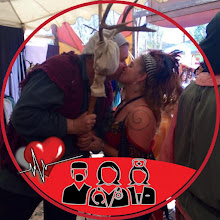
These kobold guys sure get around. They have had various incarnations in D&D, none of them very much like their legendary “real world” counterparts.
I have not used a kobold (and who could use just one?) in my games for at least 15 years. There came a point in my long-running game world, maybe in the early 90’s, where I just thought there were too many non-human “goblinoids” running around in tunnels and ruins of my lands. Orcs, goblins, hobgoblins, gnolls, bugbears, kobolds, and others. And of course, if I had used every variation of these creatures that appeared in The Dragon, White Dwarf, or The Dungeoneer, It would be a goddamn overpopulated circus world down there!
I mostly stuck with orcs and goblins throughout the 90’s for my underground grunt troops. Bugbears were pretty much Uruk Hai orcs, except for the brief period I had as a kid. In those very early days I portrayed them like they appeared in a crude original D&D book – a big hairy body with a pumpkin for a head. I still used gnolls very occasionally in the 90’s (with a tendency to inhabit above ground ruined cities), and still thought of them as being in remote parts of my world. But my thinking was that kobolds just don’t exist anymore, at least where players might go in their travels.
But in trying to come up with a quick mini-adventure with a bit of combat for next week, kobolds came to mind. I have a party of mid-level characters in my current campaign, and I am adding a couple of new players into the mix. Hmm, what to throw at the party where 1st level dudes can fight next to the bigger guns. I know…a troop of kobolds! Little goblinoids with 3 hit points each! Everybody kills one when they hit! Nice!
But how to portray them at this point? In the old days, they were pretty much little dog-headed goblins. Before AD&D, the “white box” described them simply as small goblins (as if goblins weren’t small enough). At some point in later D&D evolution, they became non-goblin and somewhat reptilian, their dog heads replaced by lizard heads. I think I read somewhere in the nineties that they were now related to dragons! Wow, I remember that art in the DM’s guide (I think in there) with a bunch of kobolds attacking a dragon. Now they are related to them? Jeez. Third Edition described several kinds of kobold, including aquatic, desert, jungle, etc etc etc.
Who knows what the hell they are in 4th ed?
Although I just need them to be weaker goblins for my encounter (I want to describe all these little pricks running around the village making off with wine barrels and livestock), I sort of want to make them more like the legends as well. In myth, they did actually come in a variety of types. Some helped around the home (in one description I read they sound a lot like house elves from Harry Potter), some lived in troops underground and worked mines just like their D&D counterparts. Folklorists have proposed that the mine kobold derives from the beliefs of the ancient Norse or German tribes. It is suggested that the Proto-Norse based the kobolds on the short-statured Finns, Lapps, and Latvians who fled their invasions and sought shelter in northern European caves and mountains. There they put their skills at smithing to work and, in the beliefs of the proto-Norse, came to be seen as supernatural beings.
Some even snuck aboard sailing vessels to help sailors. That is very unique in legend – not many mystical creatures were helpful towards sailors. The seas were all about the terror.
Although I like the idea of expanding the kobold beyond the barking reptile dogmen of D&D past, I really already have pixies, fairies and boggarts to play these parts. Because I have Scottish parents I have heard a lot about Brownie legends, and use them for needed purposed in games at appropriate times. They can do everything from help an old man repair a shop full of shoes, to making a farmers milk go bad.
But at least I have rediscovered the humble D&D version of thekobold, and will use some in my game next week. I just wish I had about 50 miniatures of kobolds to use. That would spice-up the ol’ greasemat.
















No comments:
Post a Comment